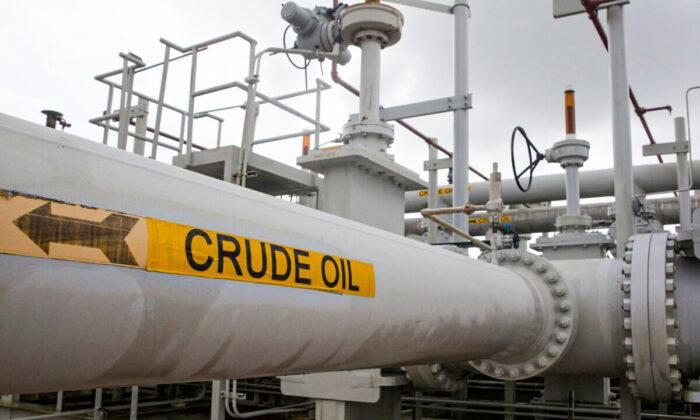LONDON—Oil prices rose on Monday on worries about supply disruption amid concerns about Russia-Ukraine discord and rising tensions in the Middle East, which could make an already tight market even tighter.
Brent crude rose 33 cents, or 0.4 percent, to $88.22 a barrel by 1149 GMT. U.S. West Texas Intermediate (WTI) crude gained 24 cents, or 0.3 percent, to $85.38.
“Oil prices are profiting from supply risks and geopolitical tensions,” said Commerzbank analyst Carsten Fritsch.
“Further escalation of the Ukraine conflict and the fraught security situation in the Middle East justify a risk premium on the oil price because the countries involved—Russia and the UAE—are important members of OPEC+.”
Tensions in Ukraine have been increasing for months after the Kremlin massed troops near its borders, fuelling fears of supply disruption in Eastern Europe.
The U.S. State Department announced it was ordering diplomats’ family members to leave Ukraine.
Energy markets are likely to be hit if tensions turn into conflict. Europe relies on Russia for about 35 percent of its natural gas. JPMorgan said the tensions could prompt a “material spike” in oil prices.
However, Russia said on Monday that it remained a reliable energy supplier to Europe even at “uneasy periods in our relations.”
In the Middle East, the United Arab Emirates intercepted and destroyed two Houthi ballistic missiles targeting the Gulf country on Monday after a deadly attack a week earlier.
Barclays, meanwhile, has raised its average oil price forecasts by $5 a barrel for this year, citing shrinking spare capacity and elevated geopolitical risks.
The bank raised its 2022 average price forecasts to $85 and $82 a barrel for Brent and WTI respectively.
Both benchmarks rose for a fifth week in a row last week, gaining about 2 percent to their highest since October 2014.
Oil prices are up more than 10 percent this year on the concerns over tightening supplies, apparently out of sync with global equities markets that are bruised from a massive sell-off triggered by concerns over tighter monetary policy around the globe.
The oil market is also tight, with OPEC+ struggling to hit its targeted monthly output increase of 400,000 barrels per day (bpd).





